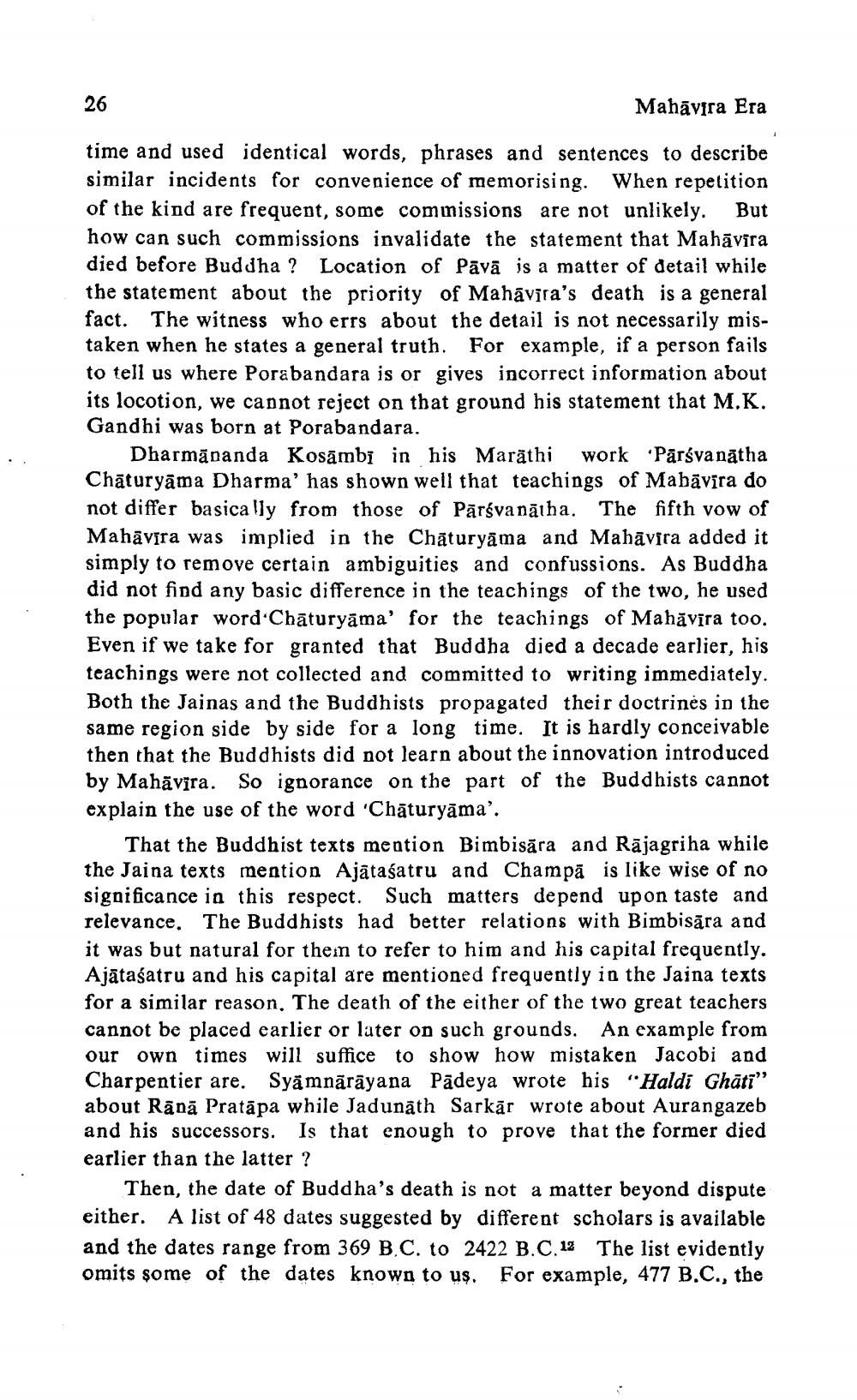________________
26
Mahavira Era
time and used identical words, phrases and sentences to describe similar incidents for convenience of memorising. When repetition of the kind are frequent, some commissions are not unlikely. But how can such commissions invalidate the statement that Mahavira died before Buddha? Location of Pāvā is a matter of detail while the statement about the priority of Mahavira's death is a general fact. The witness who errs about the detail is not necessarily mistaken when he states a general truth. For example, if a person fails to tell us where Porabandara is or gives incorrect information about its locotion, we cannot reject on that ground his statement that M.K. Gandhi was born at Porabandara.
Dharmananda Kosambi in his Marathi work Pārsvanatha Chaturyāma Dharma' has shown well that teachings of Mahāvīra do not differ basically from those of Parsvanatha. The fifth vow of Mahavira was implied in the Chaturyama and Mahāvira added it simply to remove certain ambiguities and confussions. As Buddha did not find any basic difference in the teachings of the two, he used the popular word Chaturyāma' for the teachings of Mahāvīra too. Even if we take for granted that Buddha died a decade earlier, his teachings were not collected and committed to writing immediately. Both the Jainas and the Buddhists propagated their doctrines in the same region side by side for a long time. It is hardly conceivable then that the Buddhists did not learn about the innovation introduced by Mahavira. So ignorance on the part of the Buddhists cannot explain the use of the word 'Chāturyāma'.
That the Buddhist texts mention Bimbisara and Rajagriha while the Jaina texts mention Ajataśatru and Champa is like wise of no significance in this respect. Such matters depend upon taste and relevance. The Buddhists had better relations with Bimbisara and it was but natural for them to refer to him and his capital frequently. Ajātaśatru and his capital are mentioned frequently in the Jaina texts for a similar reason. The death of the either of the two great teachers cannot be placed earlier or later on such grounds. An example from Our own times will suffice to show how mistaken Jacobi and Charpentier are. Syāmnārāyana Pādeya wrote his "Haldi Ghātī” about Rānā Pratapa while Jadunath Sarkar wrote about Aurangazeb and his successors. Is that enough to prove that the former died earlier than the latter?
Then, the date of Buddha's death is not a matter beyond dispute either. A list of 48 dates suggested by different scholars is available and the dates range from 369 B.C. to 2422 B.C.12 The list evidently omits some of the dates known to us. For example, 477 B.C., the




